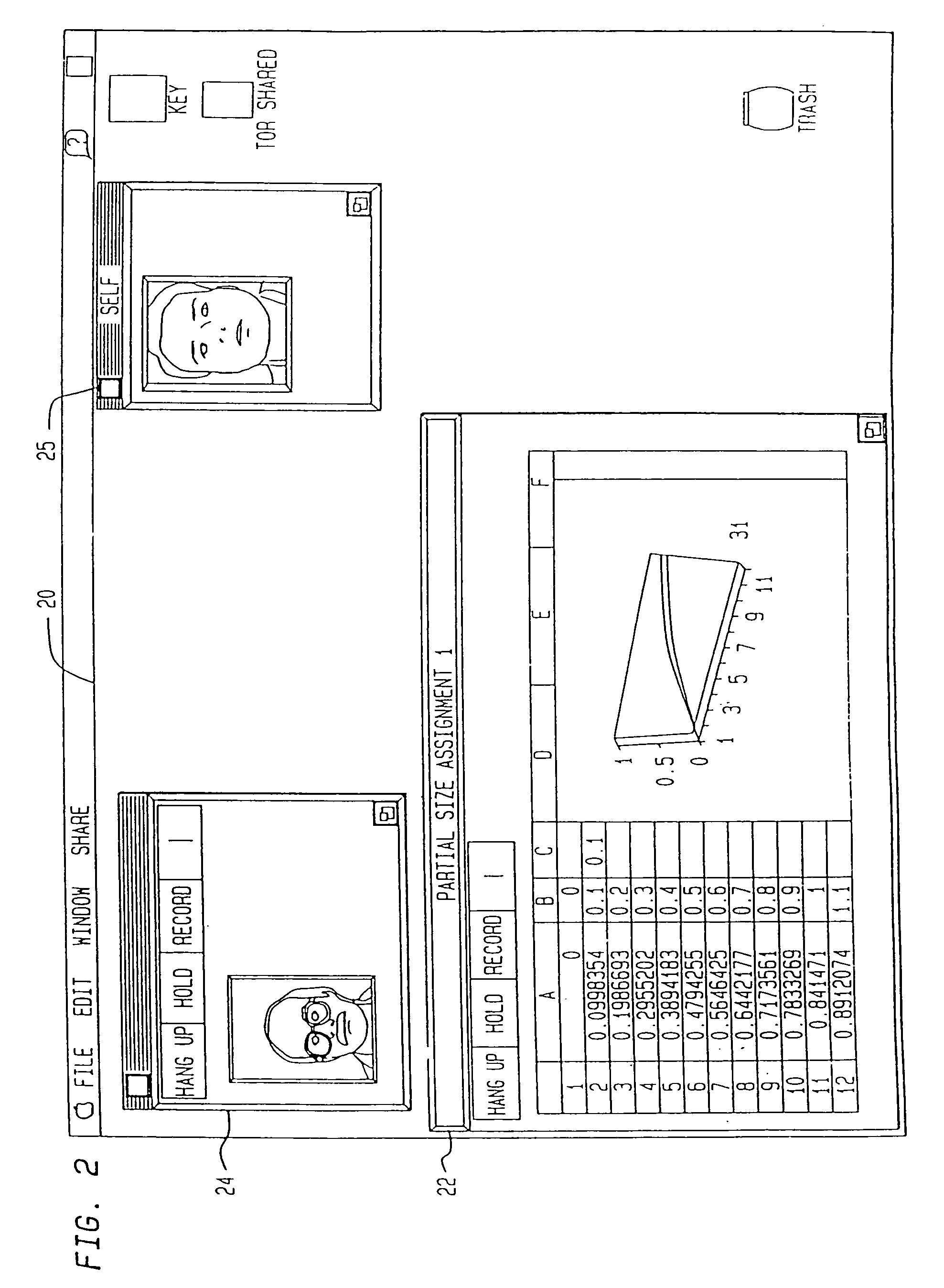Methods for multiple media digital communication
a digital communication and multiple media technology, applied in the field of digital communication systems, can solve the problems of limited bandwidth of available communication channels, inability to provide 6 mhz video bandwidth, and typical communication channels available on packet switched networks such as appletalk
- Summary
- Abstract
- Description
- Claims
- Application Information
AI Technical Summary
Benefits of technology
Problems solved by technology
Method used
Image
Examples
Embodiment Construction
[0051]From the viewpoint of the caller, the present multimedia communication system operates as follows:
[0052]A caller on a desktop computer initiates a multimedia call by selecting a media type and desired connection with a second party. A dialog box of the type shown in FIG. 1A appears on the screen, illustrating the connection status. Caller 2, who receives the call, views a dialog box on his screen of the type illustrated in FIG. 1B to announce an arriving call. Caller 2 has the option of deciding to either pick up or deny the call, or to take a message. If the call is denied by caller 2, then caller 1 views a dialog box 14 as illustrated in FIG. 1C. For purposes of illustration, a video box 16 containing a video of the first caller 1 is shown in FIG. 1D. If the caller decides to take a message, caller 2 can now control the connection and optionally send an announcement message requesting a message.
[0053]FIG. 2 illustrates the screen appearance of a typical multimedia call with ...
PUM
 Login to View More
Login to View More Abstract
Description
Claims
Application Information
 Login to View More
Login to View More - R&D
- Intellectual Property
- Life Sciences
- Materials
- Tech Scout
- Unparalleled Data Quality
- Higher Quality Content
- 60% Fewer Hallucinations
Browse by: Latest US Patents, China's latest patents, Technical Efficacy Thesaurus, Application Domain, Technology Topic, Popular Technical Reports.
© 2025 PatSnap. All rights reserved.Legal|Privacy policy|Modern Slavery Act Transparency Statement|Sitemap|About US| Contact US: help@patsnap.com



